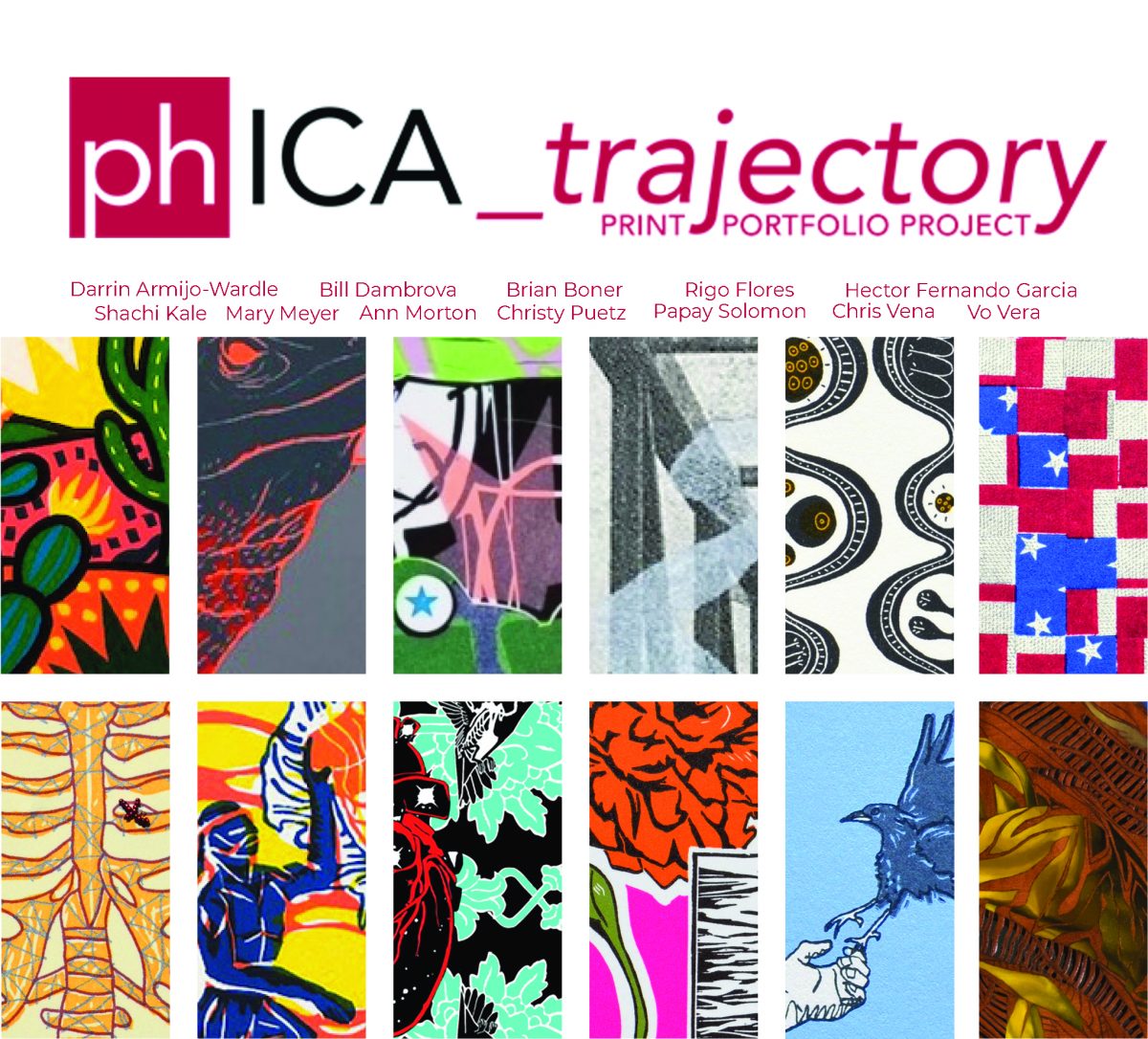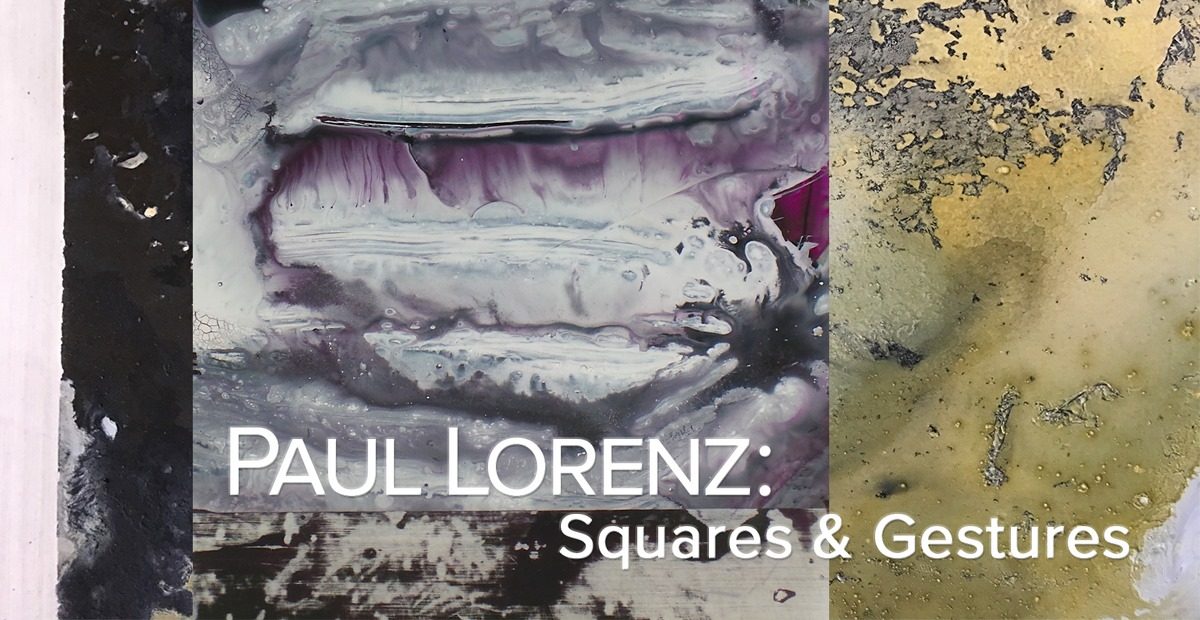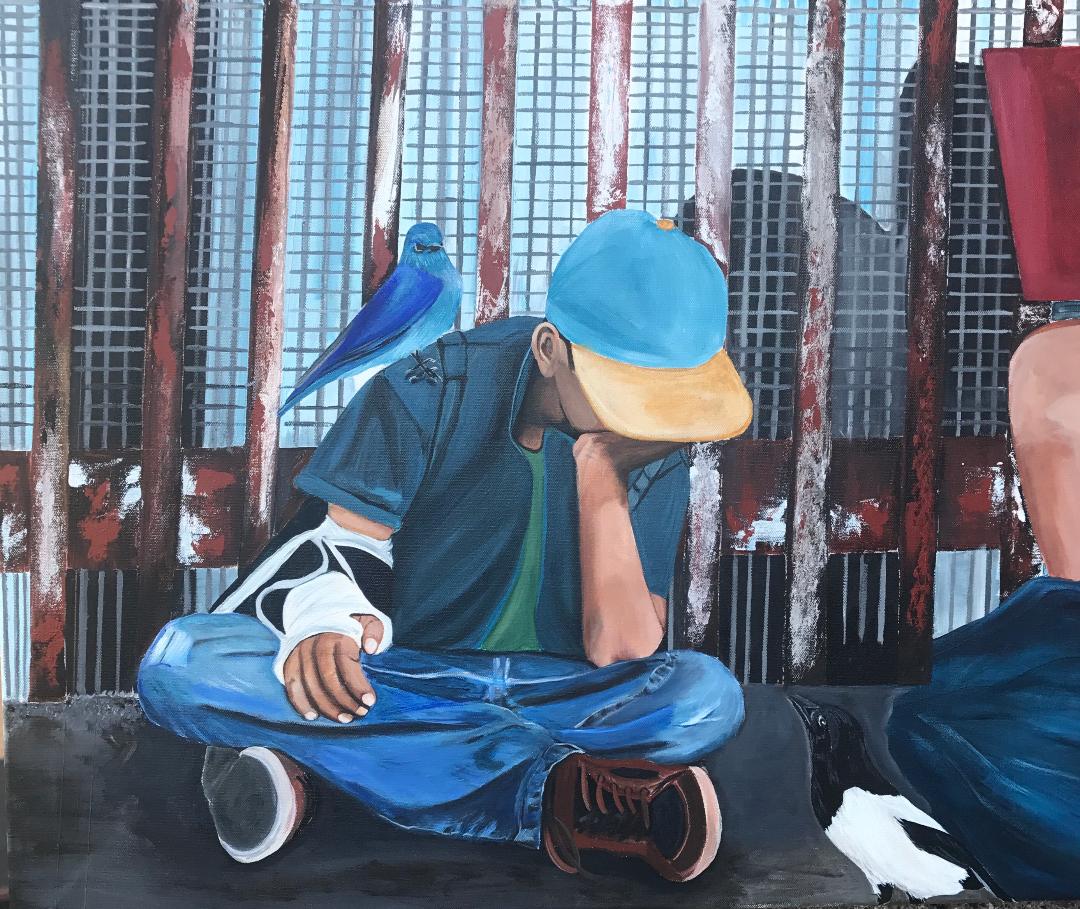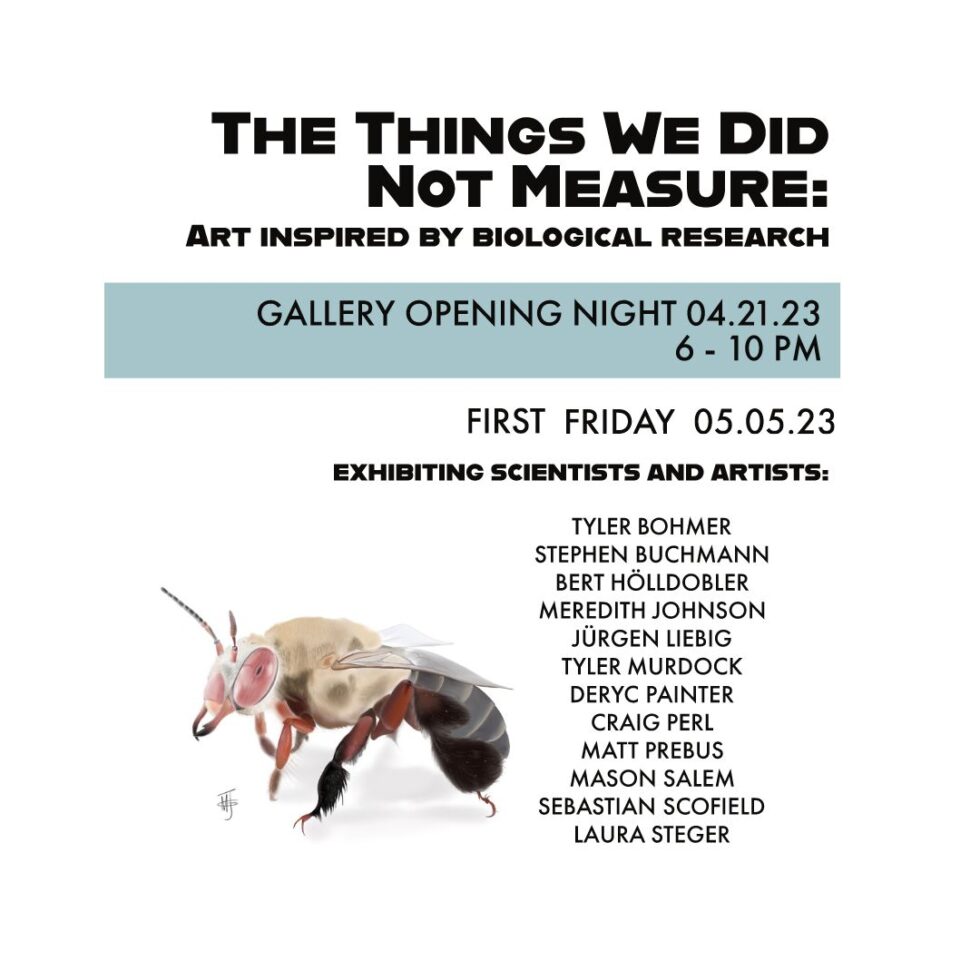
April 21 – May 13
Opening Reception: Friday, April 21, 2023 from 6 to 10 p.m.
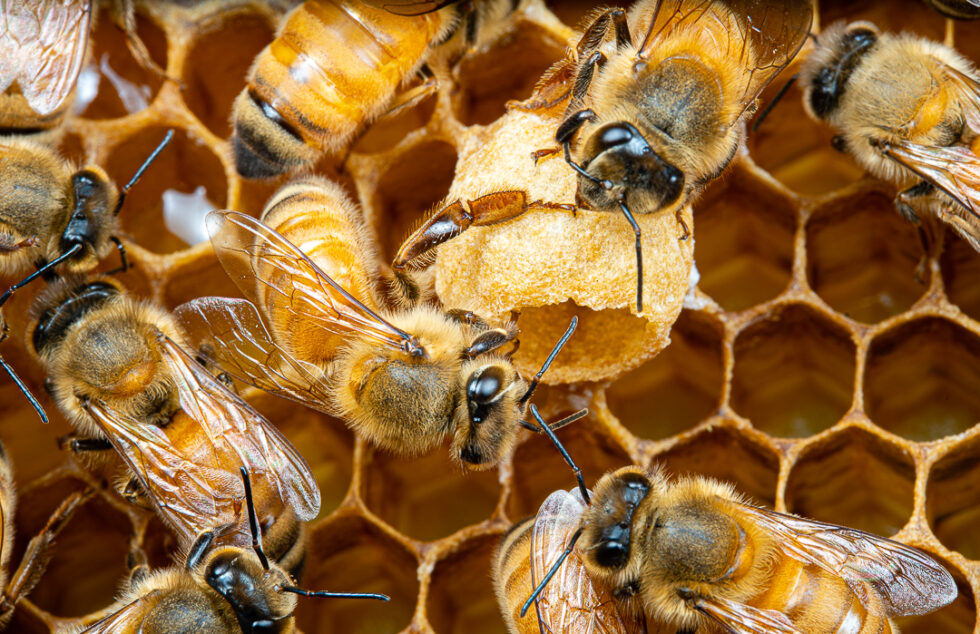
Modified Arts is thrilled to present “The Things We Did Not Measure: Art Inspired By Biological Research.” This exhibition includes biology researchers in a variety of studies that are currently based in Arizona including grad students, doctorates, post doctorates, professors and even a Pulitzer Prize Winner! Though not all would call themselves artists, all have been drawn to artwork to express their passions. Some have found their art interests inspired by their biological research while others sparked a new focus on research through a dedicated art practice. The results are a survey of their combined creativity in biological research and artwork including macro photography, printmaking, watercolor, bronze sculpture, found objects and more! We invite you to experience the wonders of this show this Friday, April 21st from 6 to 10 p.m where you can meet the incredible people behind the work.
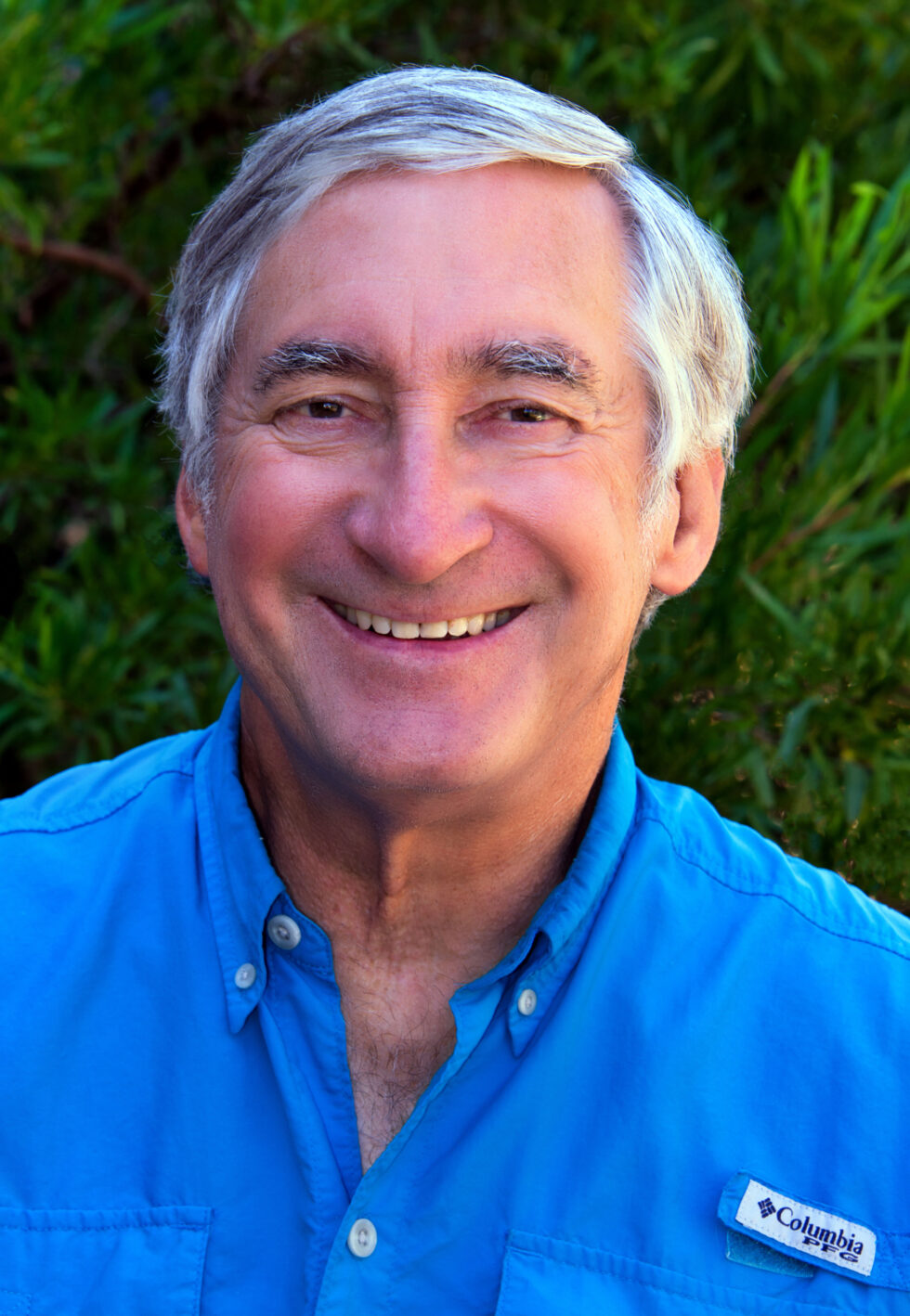
Stephen Buchmann
Dr. Stephen Buchmann is an adjunct professor in the departments of Entomology and Ecology and Evolutionary Biology at the University of Arizona in Tucson. Steve has published 200 scientific articles and 10 non-fiction books. He is a faculty advisor and mentor for graduate students at UA and ASU. Steve conducts research on the biology of native Sonoran Desert bees, especially their nesting biology, chemical ecology and mating behaviors. He is known for his work on buzz pollination. Think of a tomato blossom, a cone of 5 anthers. A female bumblebee bites into a pored anther and violently shivers her flight muscles. This sonication sends a pollen cloud out from the anthers. Striking the bees’ body, she collects the pollen grains and brings them back to the nest as larval food. He is part of a multi-university team studying the microbiome (the helpful bacteria and fungi) that live inside larval food (pollen + nectar) of solitary ground-nesting bees, and in the larval and adult guts. Just as humans need our beneficial microbes, so do bees to keep them healthy. When not chasing bees in the desert or tropics, Steve enjoys hobbies including creative writing, landscape, and macro photography along with creating small fine art bronzes at the Metalphysic foundry in south Tucson. Steve is a frequent guest on NPR’s Morning Edition and Science Friday programs. His book “The Forgotten Pollinators” (with Gary Nabhan) was a global wakeup call for the conservation and protection of bees and other pollinators. His recent books include ‘The Reason for Flowers” (from Scribner, 2015), and just published on March 7, 2023: “What a Bee Knows: Exploring the Thoughts, Memories and Personalities of Bees” from Island Press (DC). Both books are not only fact-filled and entertaining but present strong messages about the urgent need to conserve bees and their flowers. On current display (Modified Arts) are some of his bronze sculptures including: a native bee Giclée print, a multi-armed saguaro, carpenter bee pupae, and several fossilized trilobites.
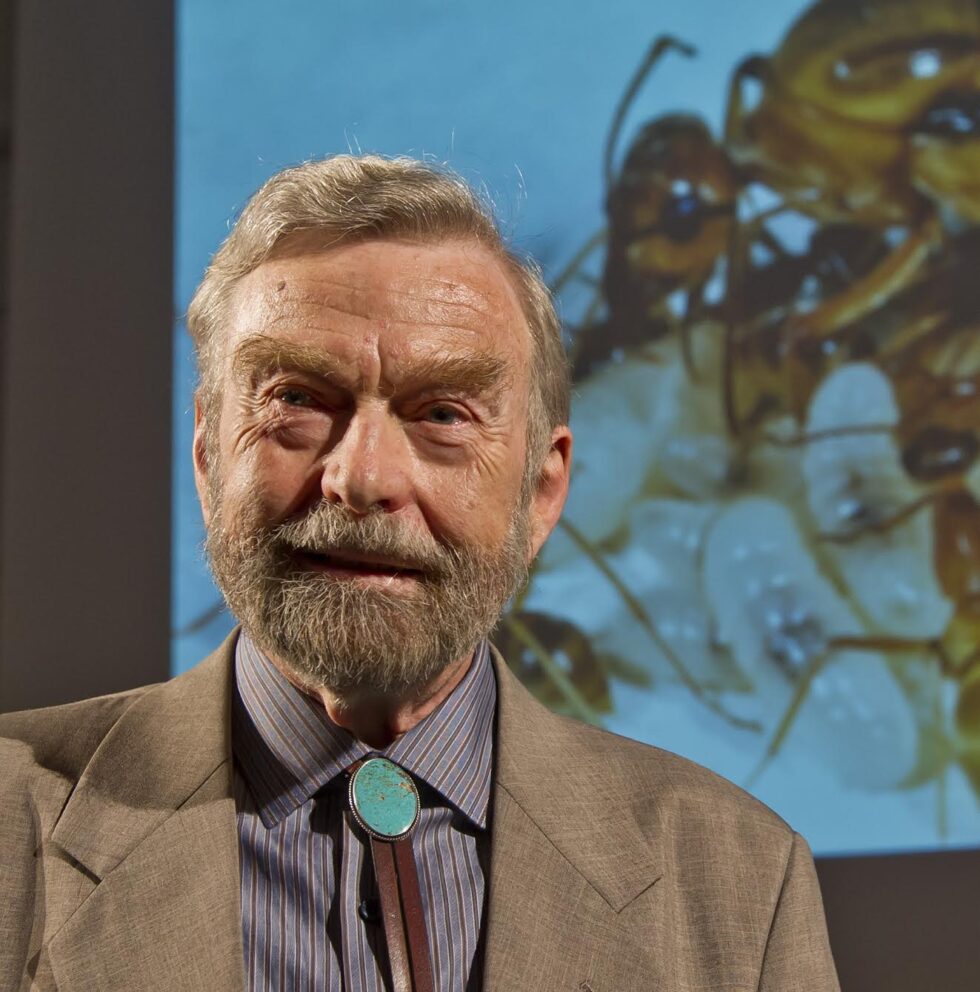
Bert Hölldobler
Bert’s fascination with ants began in childhood during a walk with his father through a German forest after his father flipped a rock and revealed a Camponotus (carpenter ant) colony. The miniature society so neatly tucked away and organized captured Bert’s interest and it never waned. Bert is one of the most well-known ant biologists (myrmecologists) of all time. In 1990, he authored The Ants with Edward O. Wilson and received the Pulitzer Prize for this work, known affectionately as “the ant bible”. Bert has authored hundreds of scientific articles on the biology of ants, as well as other books, including The Superorganism: The Beauty, Elegance, and Strangeness of Insect Societies (with Edward O. Wilson – a breakdown of the biggest topics important to the understanding of social insect biology), Journey to the Ants (with Edward O. Wilson – an accessible version of The Ants written to stir the interest of the general public), and recently: The Guests of Ants: How Myrmecophiles Interact with their Hosts (with Christina Kwapich – a synthesis of the scientific literature on the behavioral interactions of arthropods that live with and depend on ants). Bert’s research spans numerous subjects, with main themes including theories on the evolution of social insects, the superorganism concept, chemical communication, ant ecology, ant natural history, and the biology of organisms that live in association with ants (myrmecophiles). Despite his devotion to science, Bert has always enjoyed a range of activities, from horseback riding and gymnastics in his youth, to a lifelong love of art, particularly abstract art, and music. Bert always made art for himself, beginning with detailed drawings of biological subjects and portraits of scientific heroes and later, watercolors of his field sites from around the world. On display are watercolors made in between taking measurements during field experiments in the Chiricahua Mountains near Portal, Arizona. Bert enjoys creating watercolors that employ a range of techniques to produce detailed portrayals of his subject matter. However, he is most pleased with his spontaneous or “loose” watercolors that convey the light and energy of the natural scenes that inspire him.
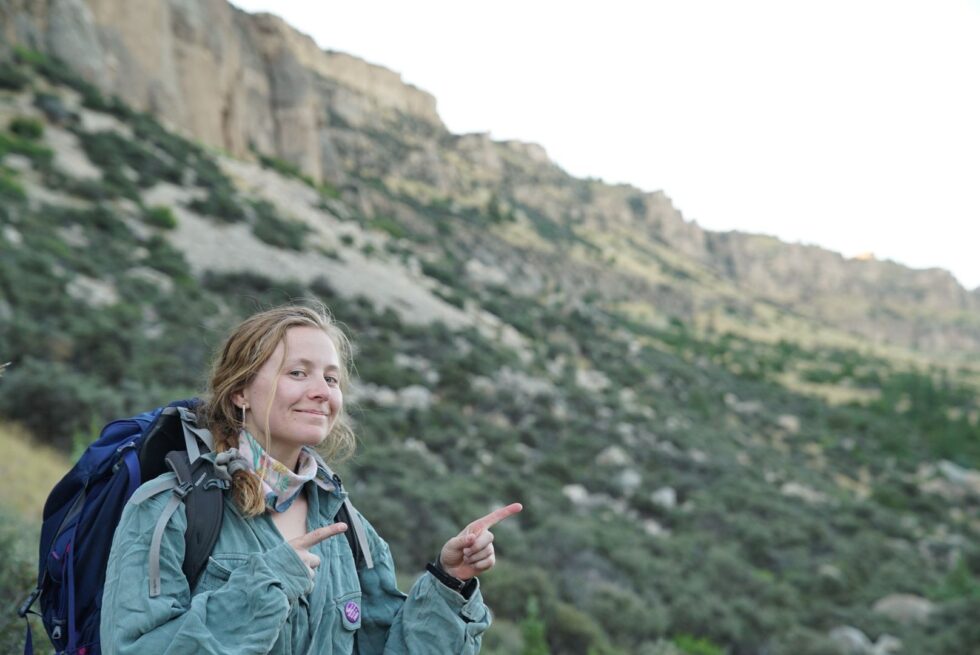
Meredith Johnson
Meredith Johnson is a Biology Ph.D. Candidate at Arizona State University and self-taught artist. In the summer of 2015, Meredith discovered that nothing would stop her from studying native bees in an incident involving a ten foot fence, a patch of morning glory flowers, and a rare solitary bee she hadn’t seen before. This love for the unfamiliar pollinators eventually guided Meredith to the Southwestern United States, the most biodiverse, beautiful, bee-filled place in North America. Meredith specializes in the thermal biology and physiology of flight for large, desert bees. Just as humans maintain body temperature at 98.6 ˚F, certain bees must also maintain higher temperatures in order to fly. (Usually around a whopping 120 ˚F!) She is best known for her scientific studies combining highly technical physiological measurements with field work in the Sonoran Desert. Meredith is also a passionate naturalist, currently a trainee with the Maricopa County chapter of the Arizona Master Naturalist Association. When not chasing bees, she can be found scaling the local desert sandstone and limestone. On rest days, Meredith draws desert life around her, dot by dot, imagining that every stroke is a cell, macromolecule, or grain of pollen making up the living organism.
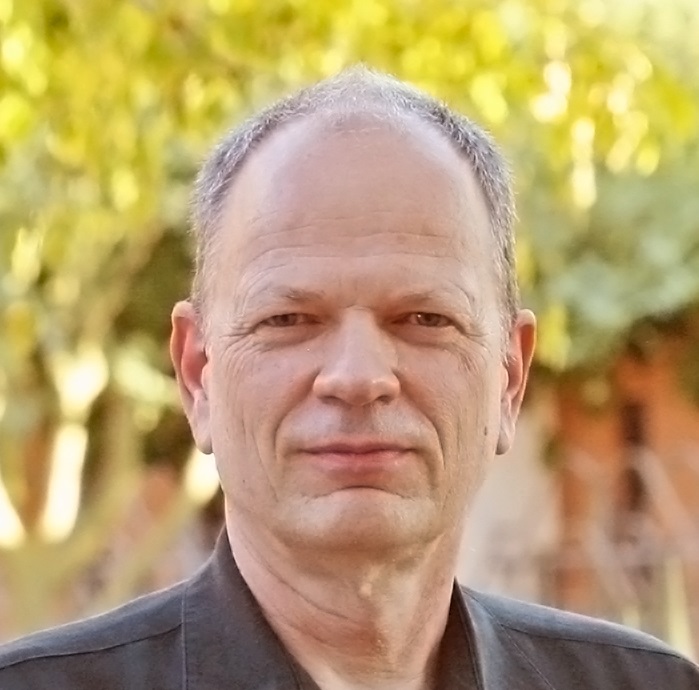
Jürgen Liebig
Dr. Liebig studies the organization, chemical communication, reproductive regulation, and behavioral and physiological plasticity of ants and termites with a focus on the colony, the individual, and the olfactory system. He enjoys taking macro images of his study animals for illustration purposes and to demonstrate the beauty of these fantastic creatures.
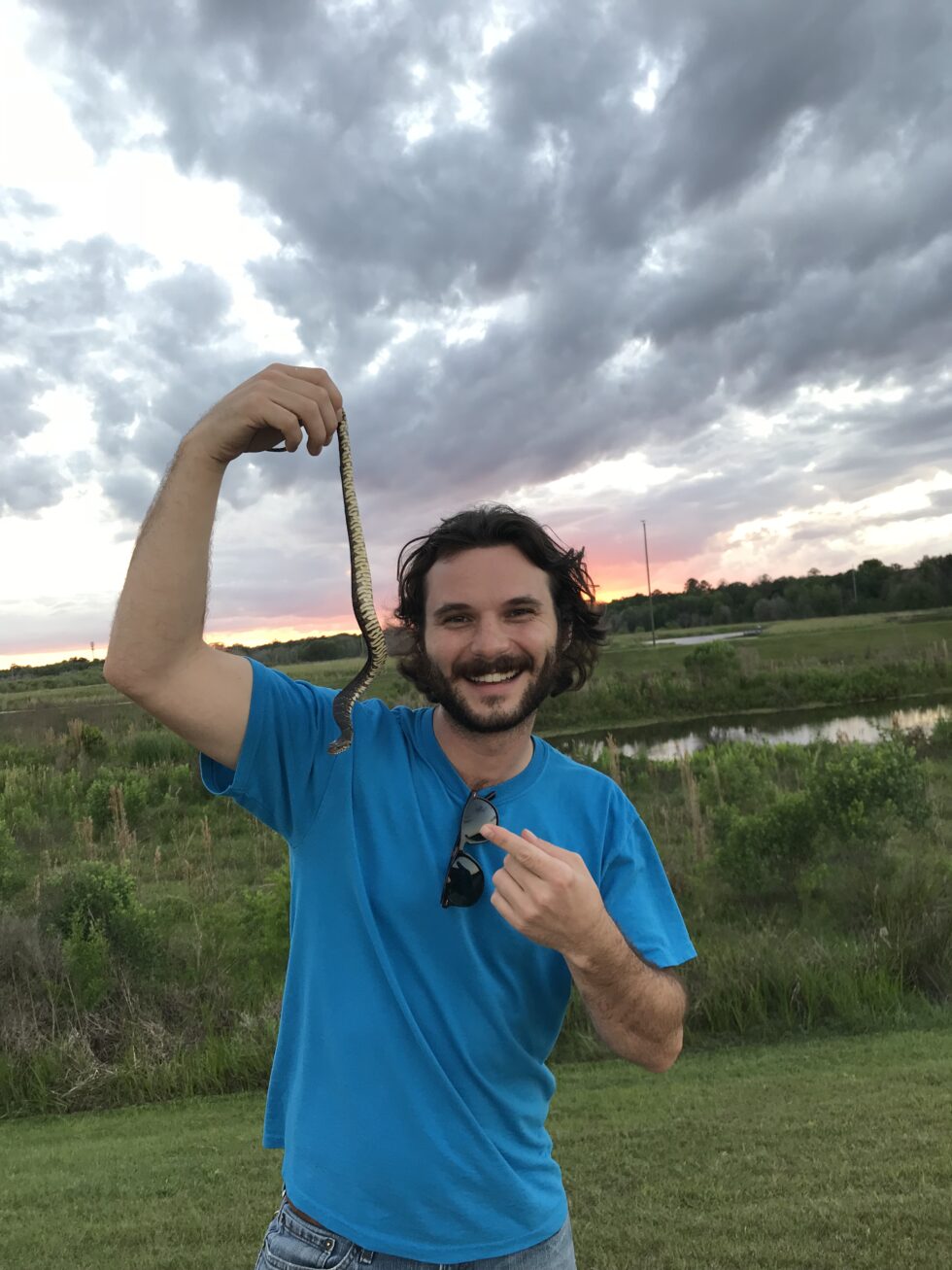
Tyler Murdock
Tyler Murdock grew up in north Florida exploring the woods, climbing trees, and canoeing in swamps. He would prefer to continue that way of life full-time but has chosen the next best thing – a carrier in biology. He actually always wanted to be a biologist, but never knew which group of organisms he would choose to study – they were all so interesting. In high school, his mom wrote a newspaper article about an ant biologist at Florida State University and asked if her son could contact him to discuss how to become a biologist. That scientist was Dr. Walter Tschinkel, an expert in fire ants, ant nest architecture, and ant natural history. Dr. Tschinkel showed Tyler the wonder of ants and formal biology and 17 years later, Tyler still cannot get enough. Ultimately though, Tyler owes his love of nature and art to his father, who was himself a professional artist and avid nature-lover. Both of Tyler’s parents made sure he spent lots of time outside and had the opportunity to focus on his passion for biology. Tyler’s father once told him that learning to draw is learning how to see: understanding perspective, colors, conveying depth, movement etc. Tyler thinks that approach to looking at the world has been immensely helpful when doing biological research. Having an eye for detecting differences between species or the features of a certain anatomical structure always reminds Tyler of art. For Tyler, it is probably the overwhelming beauty of nature that keeps him interested, just as much as the pressing mysteries of the strange and wonderful ways that living things made do and evolve. Tyler is currently a Ph.D. candidate at Arizona State University in the Social Insect Research Department studying queen signal evolution in carpenter ants in the lab of Dr. Juergen Liebig.
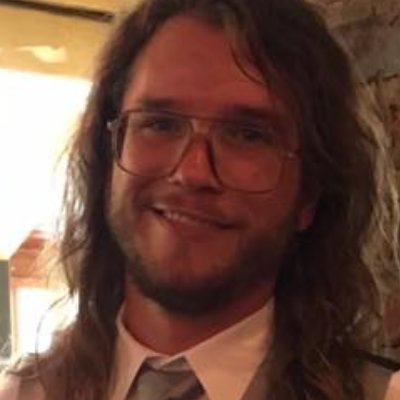
Deryc Painter
Deryc is an Assistant Research Professor in the School of Complex Adaptive Systems at Arizona State University. His research focuses on computational patterns in Earth systems and scientific research. He spends his time making and analyzing networks of interactions between scientists and scaling relationships of the Anthropocene. In his free time, he spends his days perfecting his billiards game and enjoying finely crafted spirits.
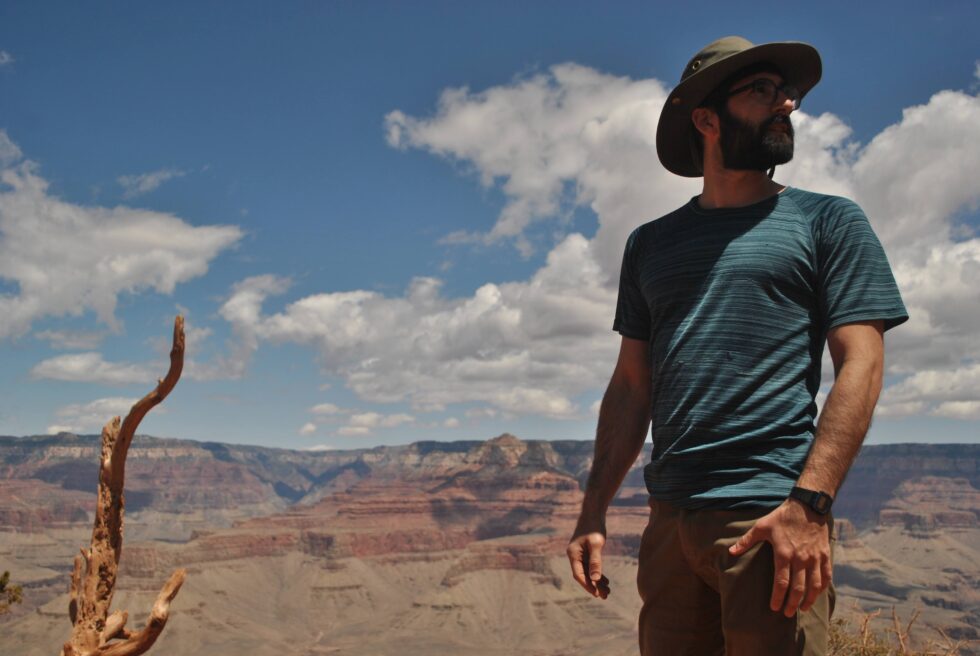
Craig Perl
Dr. Craig Perl is a postdoctoral research fellow at Arizona State University and accidental photographer. Craig’s fascination with insects began at the age of 16 when dissecting a locust (Schistocerca gregaria) during a biology lesson. Encouraged by an avuncular teacher, Craig delved into British natural history and pursued an undergraduate biology degree. He volunteered his time at the Natural History Museum, London and worked for a year at the Royal Botanical Gardens, Kew. His postgraduate research focussed on saproxylic organisms (dead-wood dwellers) and the intricacies of morphological and physiological scaling in wood ants. After leaping to Sweden for two years to investigate dung-beetle locomotion and bumblebee responses to high temperatures, Craig moved to the desert to explore how social complexity interacts with brain size and energy usage in the seed-harvesting ants, Pogonomyrmex. Craig says that the average hamburger can power over 1200 ant brains for 24 hours. When not injured or up to his eyes in ant viscera, Craig spends as much time as possible climbing rocks of every size and texture, absorbing live music and running the world’s silliest Dungeons and Dragons campaign.
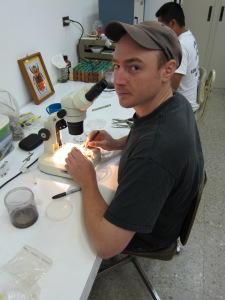
Matt Prebus
I like to work primarily in black and white because I’m colorblind, and often feel a bit confused when I use color (and feel that I often confuse viewers too). So, I stick mainly to pen and ink, linocuts, drypoint, and monotypes. I started out in community college as a fine arts major, got a scholarship to study art at university, got distracted by chemistry, then biology, then entomology, which eventually became my career. Anyhow, I’d like to say that I make these things because it complements my science-y activities, or that it fulfills some need that isn’t met in my day job. But the truth is that these days I make art mostly to entertain my family and friends. I hope you like it too!

Mason Salem
Hi, my name is Mason Salem and I am a macro photographer. Insects have fascinated me ever since I was young. Before I could walk, I was always looking into their realm and attempting to see the world from their view. However, this is nearly impossible with the naked human eye. From our perspective intricate details are often discreet or lost altogether. In my early teens, I discovered the wonders of a dslr camera which opened my eyes to a whole new world. Macro photography reveals the diversity of each and every insect with the mere click of a button, transporting us into the micro world and allowing us to see details that were once invisible. Sharing these photos with others and seeing the expressions on their faces is another aspect of macro photography that I love. Many people open their eyes in amazement after truly seeing these creatures for what they are. For me, macro photography has opened my eyes to the world, giving me a completely new perspective of the once unnoticeable insects around me. These photographs are what sparked my interest in insects and my desire to look closer at the world. They caused me to seek more knowledge and experiences, but most importantly, they helped me find my passion.
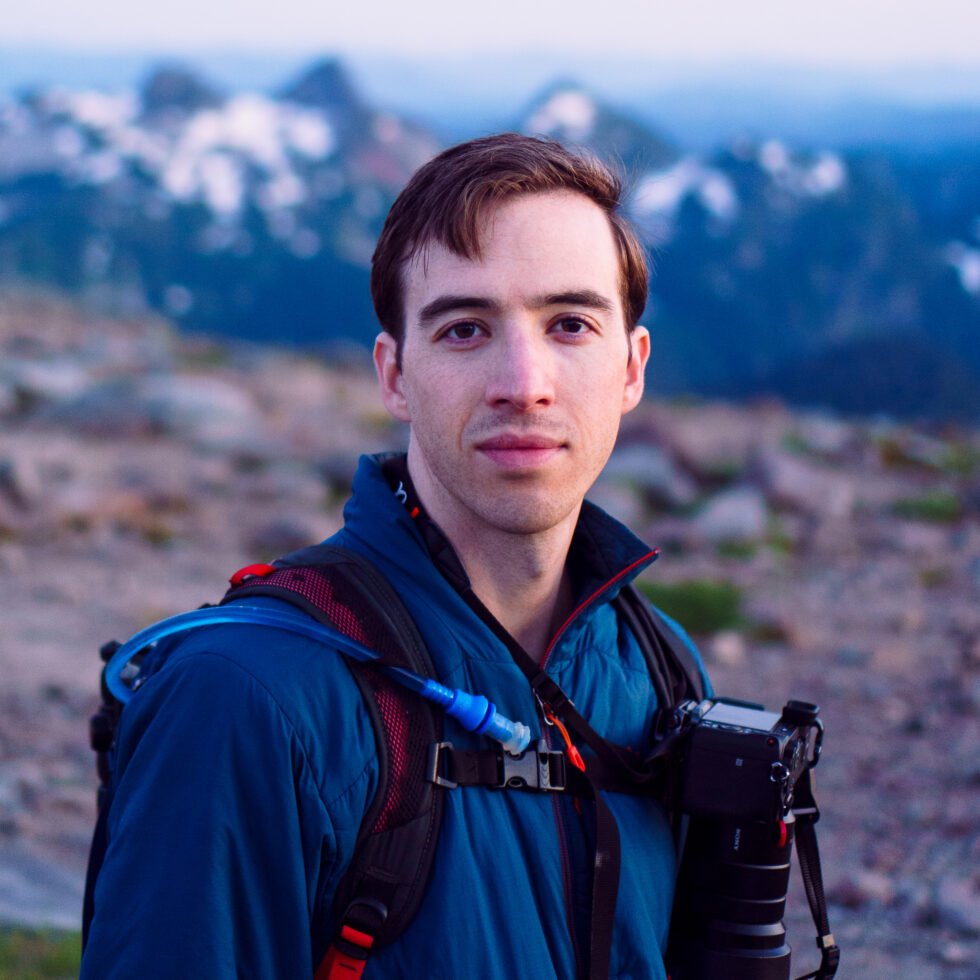
Sebastian Scofield
Sebastian Scofield is an Evolutionary Biology PhD candidate at Arizona State University. His research interests are the ecology, evolution, and physiology of eusocial insect species. Though Sebastian first became interested in social insects (and in science) at a young age because of his fascination with ants, he now primarily focuses on bees. His masters work focused on the functional role of the large (up to tenfold) size variation in bumblebee workers: small, short-tongued workers prefer to make use of small, shallow flowers, while larger, long-tongued workers preferred deeper flowers more suited to their long tongues. In his current PhD research in the Amdam Lab at ASU, Sebastian studies the physiology of honey bee workers and how that relates to their role in the hive. He is especially interested in the metabolic changes that accompany a worker as she transitions from her early life role as a nurse, feeding developing larval bees, to a forager, taking flights to flowers to bring back nectar and pollen to the hive. Specifically, he is investigating what causes foragers to lose the fat stores they have as nurses and to remain lean for the rest of their lives, despite consuming a very high-sugar diet. When not in the lab investigating honey bee physiology, Sebastian enjoys activities that maximize time in wild areas, such as hiking, skiing, and camping, and he carries a camera with him wherever he goes. Photography has also paired well with his scientific interests, allowing him to document many of his research subjects. Sebastian especially enjoys how macro photography lets you showcase the richness of biodiversity that is right underfoot: all of his photos on display today were taken in the urban environment of ASU’s Tempe campus.
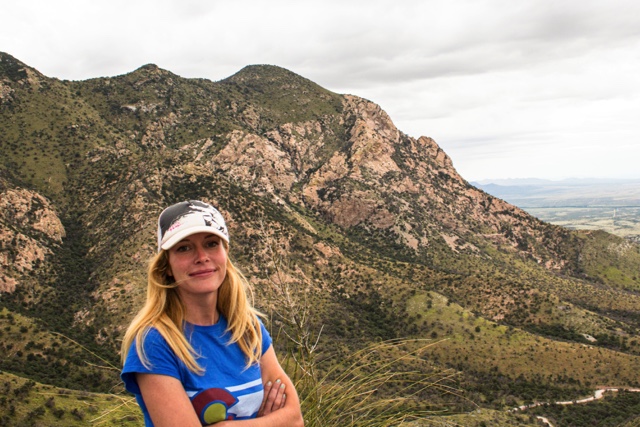
Laura Steger
Artist: Laura Steger is a wildlife biologist, ecologist, and vertebrate collections manager for the National Science Foundation’s National Ecological Observatory Network (NEON) Biorepository at Arizona State University. She is obsessed with the Sonoran Desert and all the plants and animals that call it home. In the summer, when the monsoons begin to unleash rain across Arizona, she can be found out in the desert with the critters.

